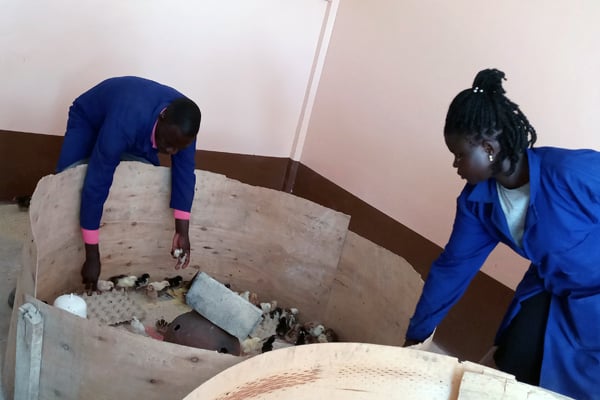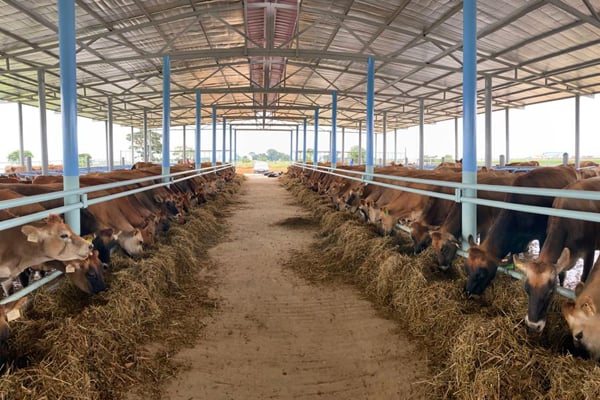Prime
Scientists: Indigenous chicken will give you more

Agronomists sort day old Indegenous chicks after hatching. Photo / Lominda Afedraru
What you need to know:
- About 40 percent of all households in Uganda keep chickens, largely in free-range systems. They provide food and income and can be easily sold in time of need. There are three major chicken production systems in Uganda: the free-range, the semi-intensive and the intensive production systems.
Poultry contributes to improved human nutrition and food security by being a leading source of high quality protein in form of eggs and meat.
It acts as a key supplement to revenue from crops and other livestock enterprises, thus avoiding over dependency on traditional commodities with inconsistent prices.
It has a high potential to generate foreign exchange earnings through export of poultry products to neighbouring countries. Poultry is highly prized in many social-cultural functions such as dowry and festivities.
Breeding
In Uganda, majority of the poultry farmers keep broilers, layers and kuroilers. However this mindset could change for farmers in northern Uganda if the adopt the new initiative which is being promoted by National Agricultural Research Organisation (NARO) under the Development Initiative for Northern Uganda (DINU).
Background
Dr Alfred Komakech based at Ngetta Zonal Agricultural Research Development Institute (Ngetta Zardi) says under local chicken, breeding programme, the he has already acquired parent stock for breeding.
Dr Komakech is already breeding and multiplying the chicken at a facility at Mukono Agricultural Research and Development Institute (MuZardi). However later this year, the eggs will be transferred to Ngetta Zardi to be hutched using already acquired hatchery with the capacity of hatching 336,000 eggs in a batch.
Process
After 21 days the eggs are hatched and more eggs will be loaded after every twenty one days to maintain the production. The eggs are fertilised because the scientists have ensured that the elite stock of hens and elite stock of cocks where a unit containing ten hens is rationed to one cock. Once the eggs are hatched, the scientists will give farmer groups one day old chicks which they will keep as a group and once they have multiplied, they will be able to acquire the breeds on individual basis for further multiplication as an income earning initiative. The scientists have organised the farmers into groups where farmer hubs have been set up in various villages in Lango and Acholi sub region. These hubs are utilised for bulking their produce for onward marketing as well as training them on best practices of how to handle their crops, poultry and dairy farming.
Management
Richard Lumu a livestock technician at MuZardi explaining the process of breeding and multiplication notes that his team began breeding the chicks late 2020 because they now have second generation stock of the chicks which are fully grown. It takes about six months to grow and the hens to lay eggs unlike those bred in homes which may take one year to mature. At the moment the team is identifying the viable superior stock which they will finally use for egg production because they want farmers to obtain the best breeds. Since the parent stock is from various region in northern and eastern Uganda, the team isolates them and each chick is tagged upon hatching on day one for purposes of studying its genetic characteristics and superiority in various growth stages.
Currently, there are more than 800, chicks and first generation grown chicken multiplied from the initial parent stock. They are weighed from day one until 24 weeks and those weighing more are identified superior in growth. So far the team has maintained the superior stock which they are further multiplying for egg production to be dispatched to Ngetta Zardi. However, the team has given chicks to four different farmer groups in central Uganda in Mukono and Kawanda to establish how well they can adopt to the climate here because eventually this technology will be rolled to farmers across the country.
Apart from transferring eggs for hatching to Ngetta Zardi, the team intends to dispatch second generation chicks at early growing stage to farmer groups in the districts where the parent stock was collected for further multiplication. The aim is to maintain the characteristics of the local breeds but raise them in improved ways where they are kept in doors in a constructed structure as well as releasing them to the outside environment for a period of time in a day since they are free rangers.
Avoiding inbreeding
Lumu explains that in most cases poultry farmers are not aware that inbreeding where the chicken which are related are made to mate affects their growth and development causing stunting. This involved taking blood samples which were tested in the laboratory to establish inbreeding characteristics of the parent stocks collected. Those that are being bred do not have these characteristics. Therefore, in the farmer sensitisation exercise already on going in the beneficiary districts, farmers are expected to avoid inbreeding in order to obtain superior breeds.
Structures
Farmers are also expected to raise simple structures for keeping their chicken with units where they are expected to ratio 10 hens to one cock.
Once the hen lays eggs, ensure they are allowed to brood within two weeks because the viability of an egg of hatching well is within two weeks from the day it was laid, beyond that the chicks may be weak and die off or not hatch at all. The hen which is expected to get spermatozoa from the cock must be well fed to enable good egg development.
Feeding
Farmers are also advised to ensure the chicken feed on green leaves because it is what makes their yolk to be different from the hybrids.
At Muzardi they have planted Russian comfrey leafy plant where they harvest the leaves for feeding the chicken as a supplementary feed.
Since the eggs are incubated in an incubator, cleanliness of the facility is key and the required temperature must be maintained meaning there has to be constant electricity therefore the team at Ngetta Zardi has ensured there is a standby generator.
Statistics
About 40 percent of all households in Uganda keep chickens, largely in free-range systems. They provide food and income and can be easily sold in time of need. There are three major chicken production systems in Uganda: the free-range, the semi-intensive and the intensive production systems.
Statistics
Local chicken suffer from diseases such as Fowl Cholera which is chronic cholera disease caused by Pasteurella Multocida that can affect the joints, wattles, infraohits, sinuses and other tissues.




